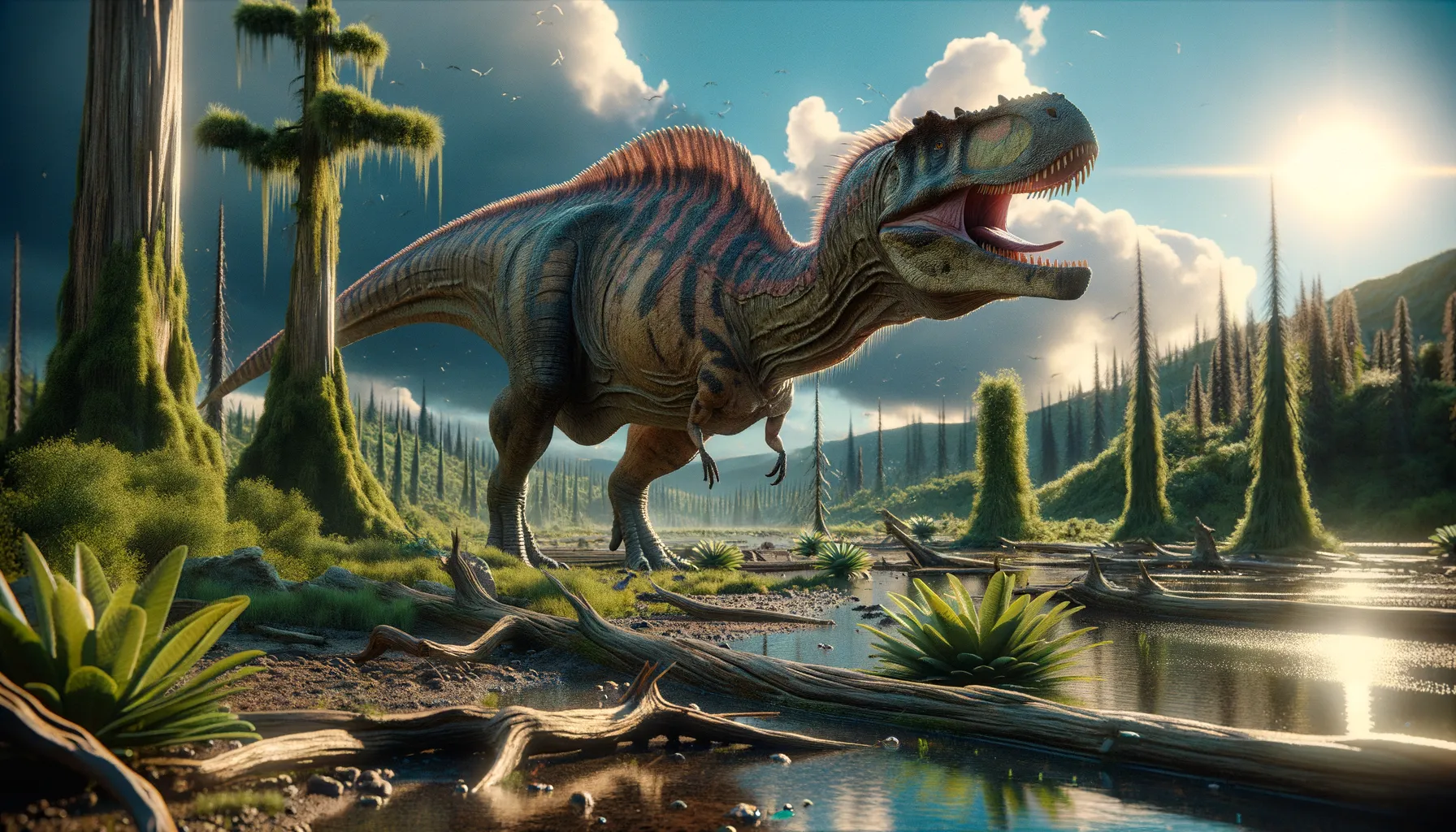
Megadactylus
Swift stride from a bygone era.
Period
Jurassic
Length
Approximately 5 to 7 meters long.
Height
Estimated around 2 meters tall at the hip.
Weight
Around 400 to 600 kilograms.
Megadactylus was a dinosaur from the late Jurassic period, known for its moderate size and probable agile movements. It likely had a distinctive body structure suited for hunting, belonging to a group that thrived in North America millions of years ago. Its discovery in the 19th century contributed significantly to our understanding of dinosaur evolution and adaptation.
Diet
Megadactylus was likely a carnivorous dinosaur, feeding primarily on small to medium-sized dinosaurs and other vertebrates. Its physical structure suggests it was an active predator.
Hunting
It used its sharp claws and powerful hind limbs for capturing prey. Its hunting strategy might have relied on surprise and speed, taking advantage of its agility to pursue fast-moving targets.
Environmental challenges
During the Jurassic period, environmental challenges included potential climate shifts and competition for food sources. Water availability could vary, impacting its habitat. Predators and prey availability would shape its survival strategies, along with volcanic activity common during the era.
Speed
Moderate, likely swift on quick sprints.
Lifespan
Approximately 20 to 30 years.
First discovery
Identified in the 1800s in North America.
Fun Facts
- Megadactylus was an early name given to the dinosaur Plateosaurus by American paleontologist Joseph Leidy in 1856.
- The name Megadactylus means 'large finger', due to its large claws.
- Megadactylus, or Plateosaurus, lived during the Late Triassic period around 214 to 204 million years ago.
- These dinosaurs were herbivores, feeding on plants in what is now Europe.
- Megadactylus had a long neck and a small head, allowing it to reach higher vegetation.
- It had powerful hind legs and a long tail, suggesting it could move swiftly when necessary.
- Fossils of Megadactylus have been found in Germany, France, Switzerland, and Greenland.
Growth and Development
Megadactylus, like many dinosaurs, experienced rapid growth during its early years. Fossil evidence suggests juveniles had different dietary needs, shifting as they matured. Development stages were marked by changes in bone structure and size.
Habitat
It inhabited forested regions with access to rivers or lakes. These environments provided ample food resources and shelter. The landscape would have featured diverse flora, supporting a range of life forms it could interact with.
Interaction with other species
It likely encountered other predatory dinosaurs, leading to potential competition. Herbivorous species were its primary prey. Its role in the ecosystem was vital, helping maintain balance by managing prey populations.
Natural lifespan
Its natural lifespan extended up to 30 years, under right conditions.
Reproduction
Reproductive habits likely involved laying eggs in safe, concealed locations. Parental care might have extended to protecting nests from other predators, ensuring offspring survival during vulnerable stages.
Social behaviour
Its social behaviour might have included forming small groups or pairs, especially during breeding seasons. Evidence of territory marking suggests it protected its resources and habitats. Communication forms could have involved vocal or visual signals.
Fossil locations
Fossils have predominantly been found in parts of North America. These discoveries are crucial for understanding its geographic range and adaptation. Various digs have unveiled important skeletal structures, further illuminating its life history.
